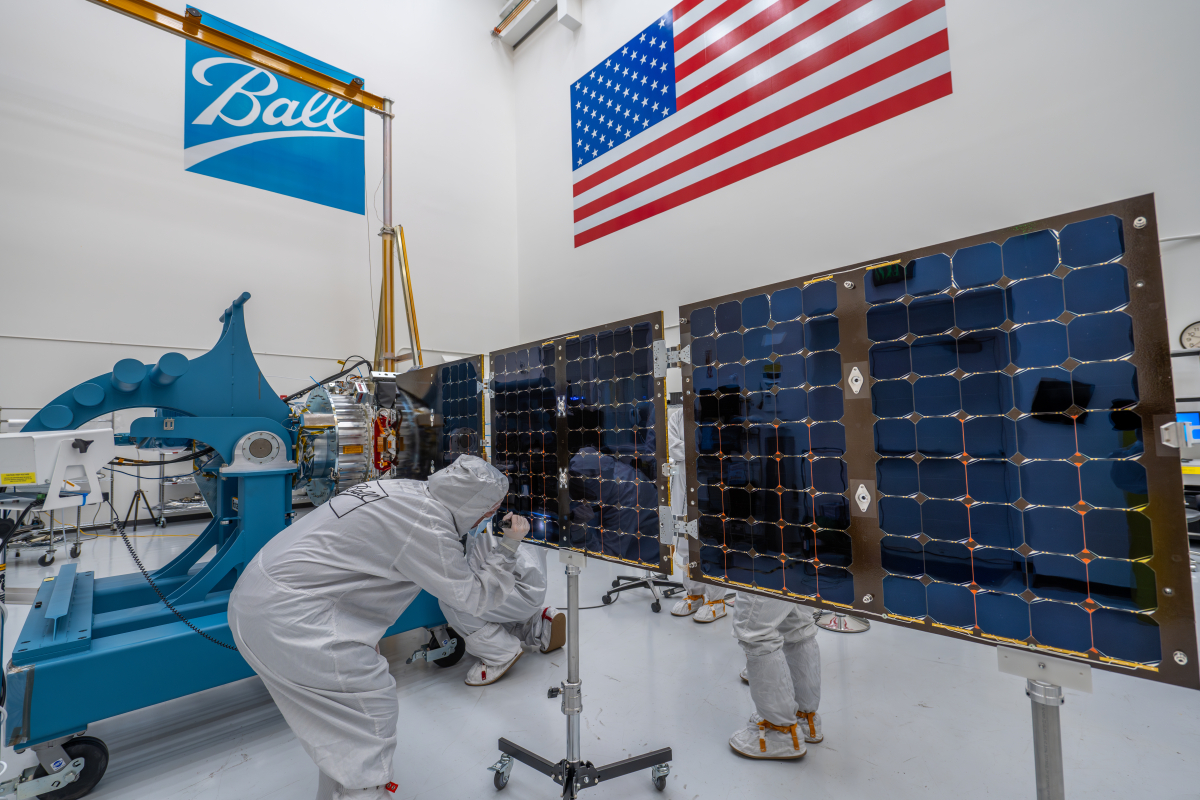A new satellite that will track methane emissions is set to launch as early as this week.
MethaneSAT’s data will be publicly available and can be used by researchers to understand the global picture of methane emissions, including the expanding liquified natural gas industry on the West Coast.
The project was co-developed by the Environmental Defense Fund, Harvard researchers, the New Zealand Space Agency, and others.
MethaneSAT is a “game changer” because of the type of data it will provide, as well as the speed it will be able to provide it to the public, said Katlyn MacKay, a scientist with the Environmental Defense Fund whose research focuses on tracking oil and gas emissions.
Most satellites that track emissions are global mappers, meaning they can measure the entire Earth in a single day. However, those satellites sacrifice resolution for coverage.
Other satellites are considered local mappers, meaning they have high spatial resolution and accuracy, but have limited geographic coverage, MacKay explained.
That’s where MethaneSAT steps in with high spatial coverage and resolution, meaning the satellite will be “filling an important data gap in the current ecosystem,” she added.
MacKay also notes that the satellite will be able to measure about 80 per cent of global oil and gas production at frequent intervals. Other satellites and on-the-ground emissions reporting will also be needed for a complete picture of methane emissions, she said.
“When it comes to this methane problem, there's no one-size-fits-all solution. We need a suite of technologies and tools,” MacKay said.
Once the satellite launches, there will be an initial commissioning phase centred on calibrations and tests that will last a few months. But the Environmental Defense Fund expects the satellite to publish publicly available data later this year, MacKay added.
One group of researchers that plans to use the satellite data to track the impact of LNG is a joint research project out of Simon Fraser University and the University of British Columbia. Researcher Laura Minet and physician Tim Takaro, alongside other collaborators in different countries, will study the air quality and potential health risks of LNG.
Minet told Canada’s National Observer that the study will be split into two sections, with the first using satellite data to track flaring at facilities around the world, particularly export facilities in Australia, the United States and Norway.
The purpose of the study is to measure how much flaring is happening compared to the self-reporting occurring at the facilities. In the past, there has been more flaring at facilities than reported, Minet explained.
The second part of the study will look at the proposed Woodfibre LNG project in Squamish, B.C. as a test case for applying scenarios around air quality monitoring. Minet points to other pollutants beyond emitting carbon dioxide as harmful to human health.
Higher concentrations of benzene, nitrogen oxide and volatile organic compounds that accompany natural gas can lead to cardiovascular diseases and asthma and impact pregnancies, Minet explained.
Matteo Cimellaro / Canada’s National Observer / Local Journalism Initiative







Comments